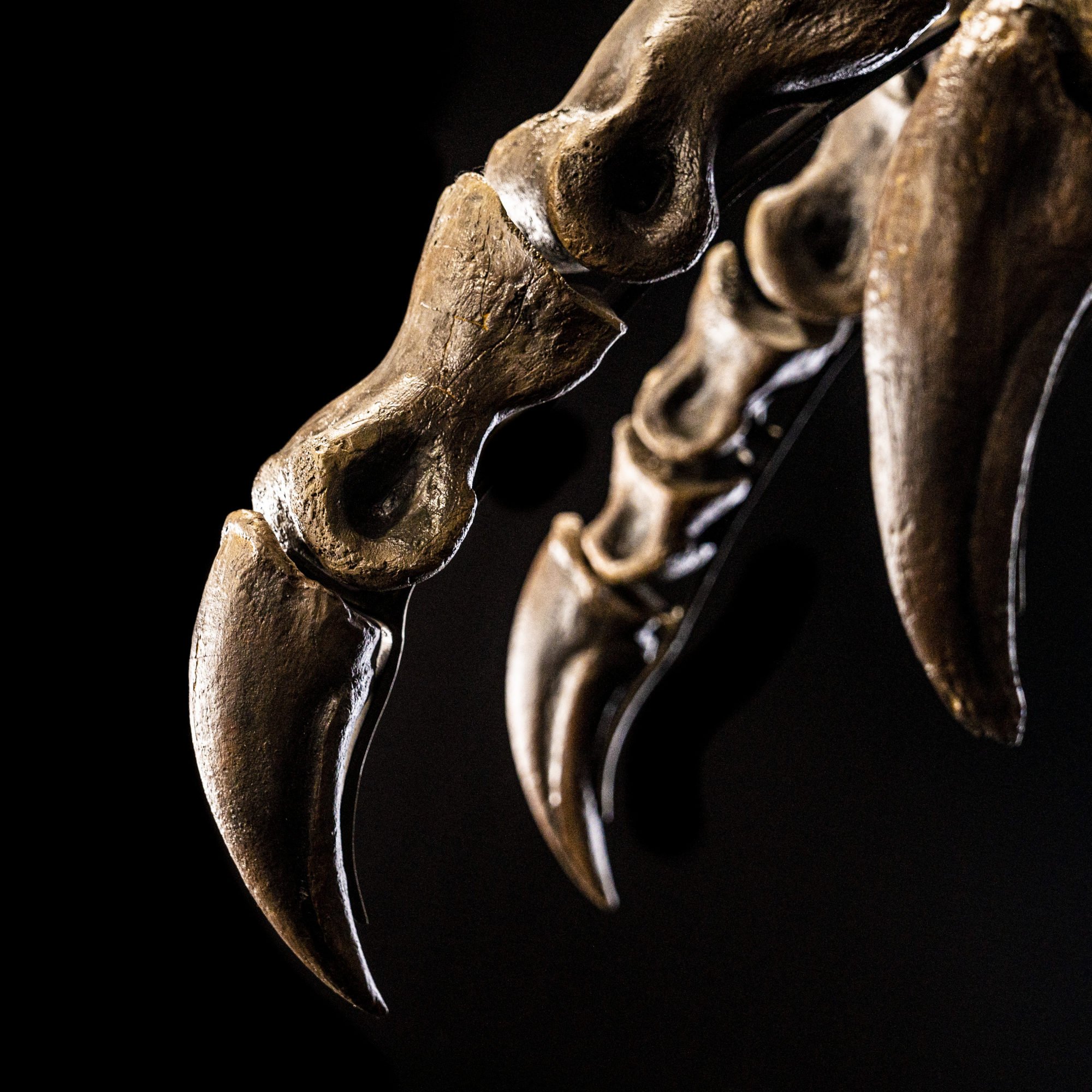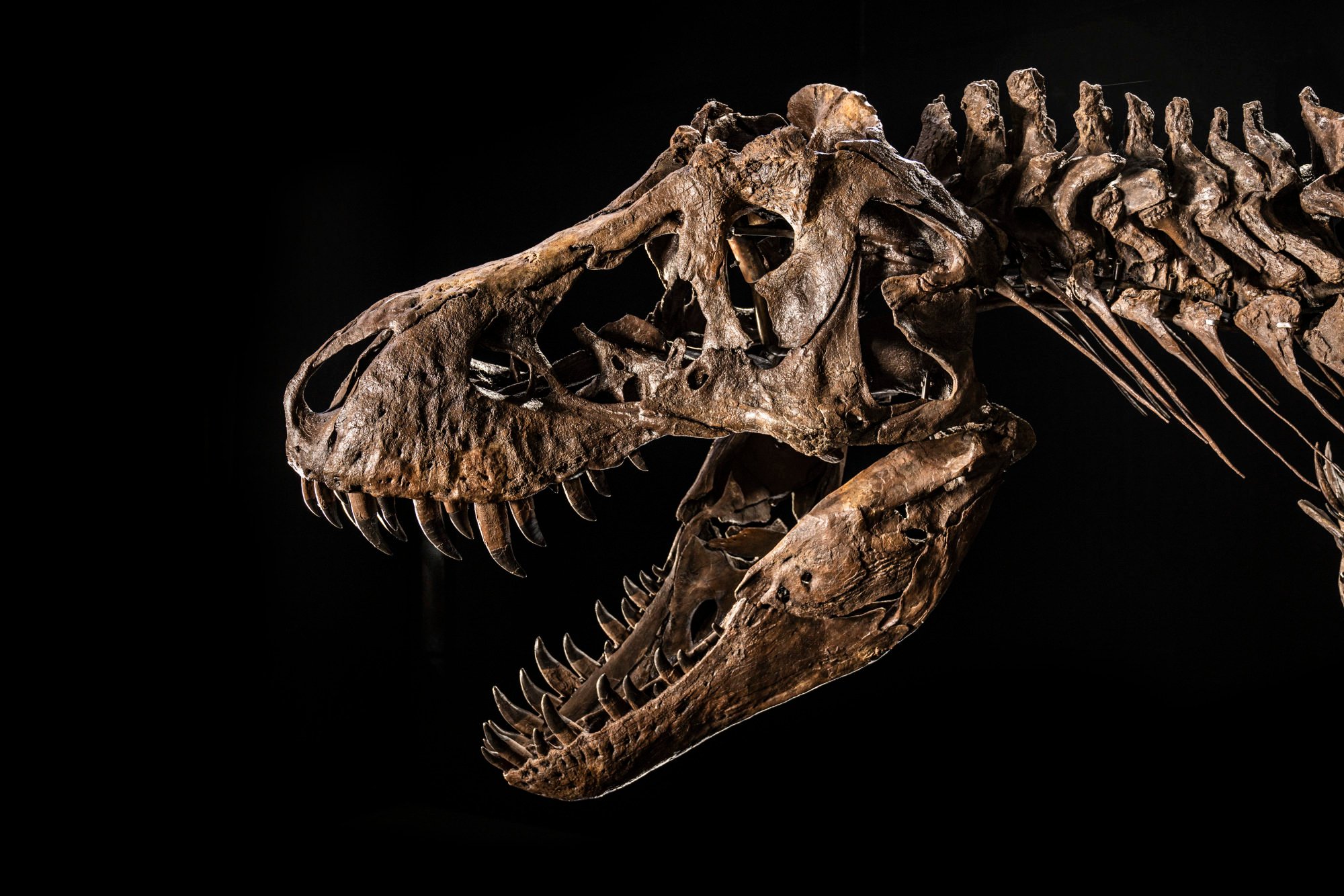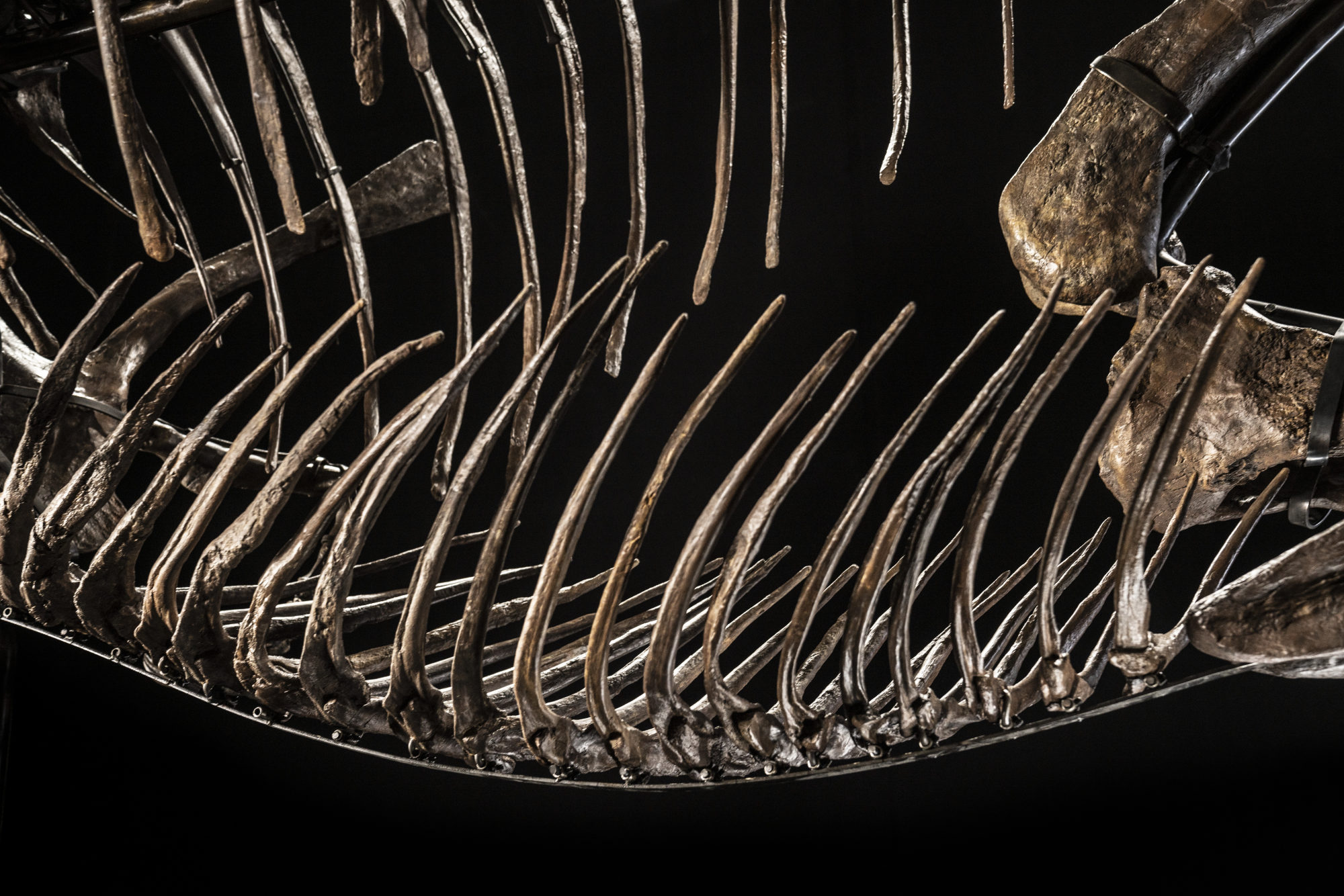
First fossil T. rex for auction in Asia at Christie’s Hong Kong autumn sales
- The fossil skeleton of the dinosaur, five metres high and 12 metres long, will be exhibited in Singapore and in Hong Kong, where it will be auctioned
- ‘Not a lot of homes of our collectors can fit this in,’ Francis Belin, president of Christie’s Asia-Pacific, says
The fossilised skeleton of a Tyrannosaurus rex, one of the most ferocious predators to ever roam the earth, will be auctioned in Asia for the first time on November 30 at the Hong Kong Convention and Exhibition Centre.
Fully mounted, this specimen – that is thought to have been alive 66-68 million years ago – was unearthed in the US state of Montana two years ago, and stands at nearly 5 metres (16.5 feet) tall and 12.2 metres long.
Christie’s, the auction house in charge of selling the fossil, will take it to Singapore’s Victoria Theatre and Concert Hall for a short exhibition from October 28-30, before transporting it to Hong Kong.
The specimen will then be on public view in the city from November 26-30, before being sold as part of its Hong Kong autumn auctions. Christie’s estimates it will sell for HK$120 million-200 million (US$15.3 million-25 million).

Francis Belin, president of Christie’s Asia-Pacific, said the decision to bring the fossilised T. rex to Hong Kong was in response to the growing appetite for fossils in the region, rather than because of the city’s recent abolition of hotel quarantine, which may bring more overseas visitors to its auctions in November.
“The pandemic has not affected our business negatively. We were completely prepared to present this object before the border reopened,” he said.
There have been fewer than 30 museum-grade T. rex fossilised skeletons unearthed so far, and no Asian institution has one, he added.
“We are delighted to provide a further platform for the public to view and learn about this phenomenal part of our natural history.”
If it’s a very valuable specimen and it goes into a private collection that the public never see, that’s a loss to science
The most expensive dinosaur fossil ever to be auctioned is “Stan”, an 11.7-metre-long specimen that was sold by Christie’s for US$31.8 million, in New York on October 6, 2020.
After its sale, “Stan” disappeared from view, much to the distress of researchers who feared they may permanently be denied access to the important specimen. It wasn’t until March 2022, when National Geographic broke the news that the fossil would be housed in the Natural History Museum Abu Dhabi upon its opening in 2025, that their fears were assuaged.
“Stan’s was one in a string of high-profile T. rex sales that date back to the first one in 1997, when “Sue” – named after Susan Hendrickson, the explorer who found it – was sold at a Sotheby’s auction in New York for US$8.3 million, after years of legal wrangling over its ownership.

“Sue” is one of the best-preserved T. rex fossils found to date, with over 90 per cent of its fossilised bones recovered. It is currently on public display at Chicago’s Field Museum, in the US.
The scientific value of the fossilised T. rex that is coming to Hong Kong – nicknamed “Shen” for the sale, which means “god” in Mandarin – is not clear, according to a dinosaur expert.
“If it’s a very valuable specimen and it goes into a private collection that the public never see, that’s a loss to science. Also, if fossils found on private land can be sold for a big price tag, then people stumbling across them may be more inclined to go the private route rather than let museum professionals excavate it,” he added.
However, Pittman stressed that research and public education needs should be balanced against the rights of people to sell things under the law.
Very little is known about “Shen”, which is said to be “54 per cent represented by bone density”, according to Christie’s. It was discovered in the Hell Creek Formation in McCone County, Montana, a well-known dinosaur site, and it has been kept secret until now.

Laws on fossil hunting and collecting differ widely around the world.
In countries such as Mongolia and China, where the Tarbosaurus, a close relative of the T. rex, once lived, dinosaur fossils are considered national heritage and exports are banned – though illegal trading remains a problem.
“We cannot control the buyer but we hope that an institution is directly or indirectly involved and hope this object will be accessible to research. Not a lot of homes of our collectors can fit this in,” says Belin.
He adds that the buyer gets renaming and full commercial rights, such as selling merchandise related to the T. rex.

